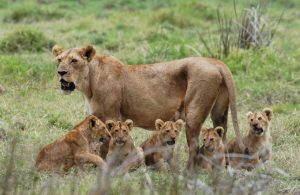The Ultimate Guide to Kilimanjaro Climbing Time
Mount Kilimanjaro, located in Tanzania, is the tallest freestanding mountain in the world and a popular destination for adventure seekers looking to conquer its peak. Climbing Kilimanjaro is a challenging endeavor that requires careful planning, preparation, and consideration of various factors that impact the climbing time. In this guide, we will explore the key factors that influence Kilimanjaro climbing time and provide tips on planning your itinerary for a successful summit attempt.
Understanding the Factors Impacting Kilimanjaro Climbing Time
-
Route Selection: Kilimanjaro offers several different routes to the summit, each varying in difficulty and duration. The most popular routes include the Marangu, Machame, Lemosho, and Rongai routes, with climbing times ranging from 5 to 9 days. The longer routes typically offer a higher success rate due to better acclimatization opportunities.
-
Altitude: Altitude sickness is a common concern when climbing Kilimanjaro, as the mountain reaches a towering height of 19,341 feet. Climbers must allow time for proper acclimatization to reduce the risk of altitude-related illnesses and ensure a successful summit attempt.
-
Fitness Level: Climbing Kilimanjaro requires a good level of physical fitness, as climbers will be trekking for several hours each day at high altitudes. Training and preparation are essential to ensure that climbers are adequately prepared for the physical demands of the climb.
-
Weather Conditions: Kilimanjaro’s weather can be unpredictable, with temperatures ranging from hot and humid at lower altitudes to sub-zero temperatures at the summit. Climbers must be prepared for a range of weather conditions and pack accordingly to stay warm and dry throughout the climb.
Planning Your Itinerary for a Successful Summit Attempt
When planning your Kilimanjaro climb, it is essential to consider the following factors to maximize your chances of reaching the summit:
-
Choose the Right Route: Selecting the right route for your climbing experience and fitness level is crucial. Consult with experienced guides from reputable tour companies like Sunset Africa Safari to help you choose the best route for your abilities and goals.
-
Allow for Acclimatization: Opt for a longer itinerary that includes ample time for acclimatization. Slow and steady climbs are key to reducing the risk of altitude sickness and increasing your chances of reaching the summit.
-
Train and Prepare: Start a training regimen several months before your climb to build strength, endurance, and cardiovascular fitness. Practice hiking with a loaded backpack to simulate the conditions you will face on Kilimanjaro.
-
Pack Wisely: Pack carefully and thoughtfully, including essential gear such as warm clothing, sturdy hiking boots, and high-altitude trekking gear. Consult your tour operator for a comprehensive packing list to ensure you have everything you need for a safe and successful climb.
In conclusion, climbing Kilimanjaro is a challenging and rewarding experience that requires careful planning, preparation, and consideration of various factors that impact climbing time. By understanding the key factors influencing Kilimanjaro climbing time and following our tips for planning your itinerary, you can increase your chances of reaching the summit and achieving your climbing goals. For a memorable Kilimanjaro climbing experience, book your tour with Sunset Africa Safari by contacting info@sunsetafricasafari.com.


